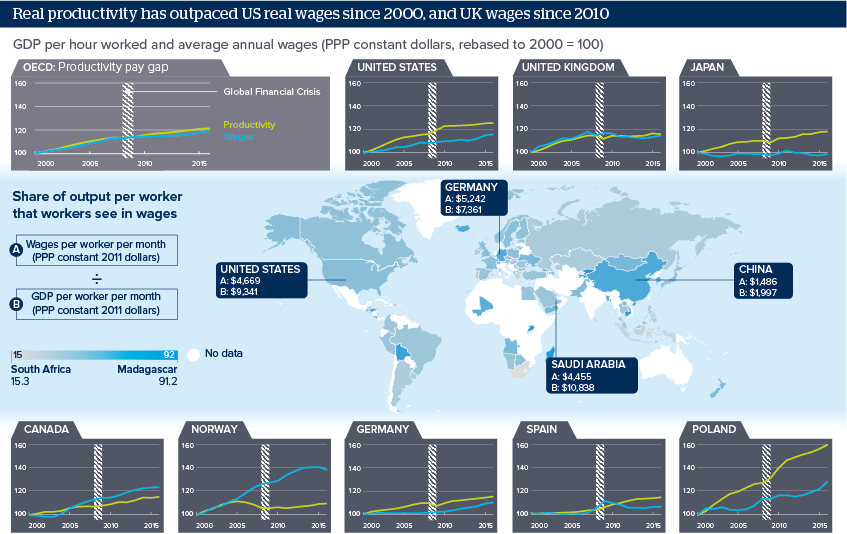Policy can prevent productivity pay gaps proliferating
The widening US productivity pay gap, where GDP gains are paid to workers less and less, is not replicated globally
Source: OECD, ILO
Outlook
William Phillips’ 1958 curve showing falling unemployment driving rising prices became consensus but the relation has faltered recently as labour and capital have become more globalised.
Consequently, not only is productivity stagnant, but also labour’s share in national income is falling, having been stable in the decades to the 1980s.
Driving this, even weak productivity growth is outpacing wages in many countries. This growing gap is suggested as being behind voting for Donald Trump and Brexit, as more productivity gains are going to capital and less to workers/voters. Productivity pay gaps have not widened uniformly, however; populism has many other drivers.
Impacts
- Income inequality and rising non-wage costs are driving the productivity/pay decoupling.
- Global cooperation against tax evasion is key as higher revenues raise scope for productive investment and welfare spending.
- Productivity depends on inputs and outputs but science and tech change both, complicating measurement; measuring wages is also a challenge.
- Raising human capital is key; technology can facilitate online and lifelong learning.
